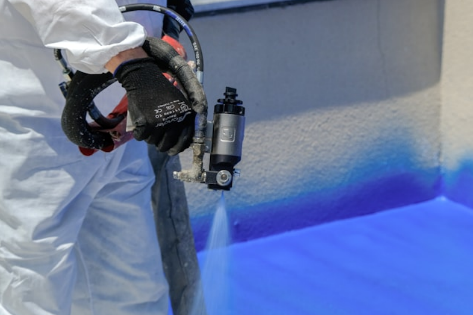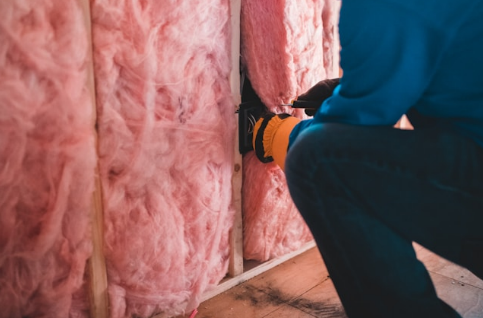Jay Capodiferro is an entrepreneur specializing in home improvements, as well as an experienced insulator with a local New York company. In the following article, Jay Capodiferro provides a comparative analysis of spray foam insulation versus traditional insulation, highlighting their advantages and potential drawbacks to help you make an informed decision for your insulation needs.
Insulation is a critical component of any building, playing a significant role in energy efficiency, comfort, and overall building performance. With advancements in technology, various insulation materials have emerged, each with its unique benefits and drawbacks. Among these, spray foam insulation and traditional insulation materials like fiberglass and cellulose are widely used.
Jay Capodiferro Provides an Overview of Insulation Types
Spray Foam Insulation
Spray foam insulation is a modern insulation material made from polyurethane or similar compounds. It is applied as a liquid that expands into a foam, filling gaps and creating an air-tight seal. Jay Capodiferro says that there are two main types of spray foam insulation:
- Open-cell spray foam: Lightweight, less dense, and more affordable, but with a lower R-value.
- Closed-cell spray foam: Denser, more expensive, and provides a higher R-value and better moisture resistance.
Traditional Insulation
Traditional insulation materials have been used for decades and include options like:
Fiberglass insulation consists of fine glass fibers and is commonly available in batts or loose-fill forms, offering excellent thermal performance and soundproofing qualities. Cellulose insulation, crafted from recycled paper products treated for fire resistance, is offered in loose-fill or wet-spray applications, providing effective thermal resistance and environmentally friendly options.
Mineral wool insulation, derived from volcanic rock or slag, comes in batts or loose-fill varieties, delivering robust fire resistance and superior thermal and acoustic insulation properties.
Comparative Analysis
Thermal Performance with Spray Foam
Jay Capodiferro explains that spray foam insulation has a higher R-value per inch compared to traditional materials, particularly closed-cell spray foam, which can achieve R-values of 6.5 to 7 per inch. This superior thermal resistance makes it highly effective at maintaining indoor temperatures and reducing energy costs.
Traditional Insulation
Fiberglass insulation typically has an R-value of 2.2 to 4.3 per inch, while cellulose insulation ranges from 3.2 to 3.8 per inch. Although these values are lower than spray foam, traditional insulation can still provide adequate thermal performance when installed correctly and in sufficient thickness.
Air Sealing and Moisture Control
One of the standout advantages of spray foam is its ability to create an airtight seal, reducing air infiltration and exfiltration. Jay Capodiferro reports that this property helps to prevent drafts and improves energy efficiency. Closed-cell spray foam also acts as a moisture barrier, preventing water vapor from penetrating and reducing the risk of mold and mildew growth.
Traditional insulation materials do not inherently provide air sealing. Additional measures, such as vapor barriers and air sealing techniques, are required to achieve similar results. Fiberglass batts, in particular, can allow air to pass through if not installed properly. However, cellulose insulation can provide better air sealing due to its dense, compact nature.

Installation Process
The installation of spray foam insulation requires specialized equipment and professional expertise. It is applied using a spray gun, and the expanding foam needs careful handling to ensure even coverage and avoid overspray. The application process can be quick, but the setup and cleanup require time and precision. It is highly recommended to hire a professional for this type of job.
Traditional insulation materials like fiberglass batts and cellulose can be installed by both DIY enthusiasts or professionals. Jay Capodiferro says that the process is generally less complex than spray foam application, though it can be time-consuming, especially for loose-fill insulation that needs to be blown into place. Proper installation is crucial to avoid gaps and compression that can reduce effectiveness.
Cost
Spray foam is typically more expensive than traditional insulation materials. The higher initial cost is due to the material itself and the need for professional installation. However, the long-term energy savings and durability of spray foam can offset the initial investment.
Traditional batting materials are generally more affordable, making them an attractive option for budget-conscious projects. The lower cost of materials and installation can provide immediate savings, though they may require more frequent replacement or maintenance compared to spray foam.
Environmental Impact
Closed-cell foam has a higher environmental impact during production due to the use of petroleum-based chemicals. However, the energy savings it provides over its lifetime can result in a lower overall environmental footprint. It’s important to choose products with environmentally friendly blowing agents to reduce the impact further.
Fiberglass insulation is made from recycled glass and sand, making it a more environmentally friendly option. Jay Capodiferro explains that cellulose insulation is often made from recycled paper products, which also contributes to its green credentials. However, the manufacturing and transportation processes still have environmental impacts to consider.
Conclusion
Choosing between spray foam insulation and traditional insulation materials depends on various factors, including budget, project requirements, and long-term goals. Spray foam insulation offers superior thermal performance, air sealing, and moisture control but comes at a higher initial cost and requires professional installation. Traditional insulation materials like fiberglass and cellulose are more affordable and easier to install but may not provide the same level of efficiency and protection.
Jay Capodiferro concludes that for homeowners and builders looking to maximize energy efficiency and create a more comfortable indoor environment, spray foam insulation is a compelling option despite its higher upfront cost. For those with budget constraints or simpler insulation needs, traditional materials remain a viable and effective choice. Ultimately, the decision should be based on a careful assessment of your specific needs and priorities, balancing initial investment with long-term benefits.








